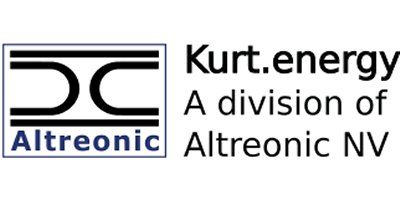

- Home
- Companies
- Kurt.Energy, A Division of Altreonic NV
- Products
- Carbon based Power Capacitors
Carbon based Power Capacitors
This technology is a new type of hybrid supercapacitor with a much higher energy density. It bridges a gap between traditional (often Lithium-based) supercapacitors and lithium-ion battery cells but uses activated carbon as its active ingredient. Contrary to batteries there is no chemical reaction involved when charging or discharging. Hence, they pose no safety risk, can work at low temperatures, and have a long lifetime. The combination of power and energy density in a safe energy storage device is what the market really needs.
What makes Power Capacitors safer and more reliable than ever?
The safety of a system comes in layers. If a safety issue exists, then it has to be addressed at multiple levels. The first level is prevention, i.e. making sure by design or by technology choice that the safety risk doesn’t exist at all. This is the level where power capacitors offer intrinsic safety and reliability. Nevertheless, power capacitor battery packs can store and release enormous amounts of electric energy. Just like with any such system, general principles of safety with power electricity still apply. Let’s now focus on the inherent safety of the technology:
- Electrolyte: while the power capacitors contain a small amount of electrolyte, its purpose is mainly to act as a filler and as a pathway for the charges to move. The electrolyte is soaked up by the nano-carbon material, so that even when the cell’s skin is breached, very little or none will leak out.
- Use of Nickel and Cobalt. These metals offer a trade-off between energy and power density. More Nickel means more energy, more cobalt means more stability. The 18650 cells for example contain no Nickel but provide a high power density. The metals are only present on one electrode and bound in specific compounds so that no free metal ions can create dangerous dendrites.
- The power capacitors come in different variants that reflect the dominant lithium-ion battery technologies. This provides a trade-off between price, safety, reliability, and performance but as it still functions as a (super) capacitor with the electric energy being stored as electric charges with no active chemical redox reactions.
- The nano-carbon materials increase the surface of the electrodes and hence increase the capacitance, allowing them to store as much energy as traditional lithium battery cells.
- Fault-tolerant, resilient power pack batteries. The powerpack is created by connecting the capacitors is a small grid mesh. If for some reason a cell would become defective (e.g. because it is damaged), then the electrolyte that doesn’t get soaked up by the carbon material might leak out and will evaporate. As no dendrites can form to create a short circuit between the electrodes, the above failure mode becomes an open circuit and while the power pack will lose some capacitance, it will continue to function as a battery.
- No dramatic warming up as each cell has a low internal resistance and in combination with the meshing connections, a power capacitor pack warms up very little even when high currents are used.
- Destructive tests have demonstrated the safety of the cells: hard short-circuit, overcharging, forced discharging, fire, drop test, nail puncture (internal short circuit), and even shooting on it with a gun showed no fire and no explosion.
- Our stress and abuse tests have demonstrated extreme robustness. Even when subjected to load conditions way beyond the permissible values, the cell keeps functioning. See some results at https://kurt.energy/unparalleled-robustness-of-blue-cell-power-capacitors/
Besides the safety and reliability benefits using power capacitors also translates into a simpler system design. Firstly, no BMS (Battery Management System) is needed to actively balance the cells when charging or discharging. A failing BMS is often a root cause for a battery fire. Secondly, as the cells operate from very cold freezing temperatures to very warm desert-like temperatures, most or no active cooling is needed as the cells barely warm up. Hence, most of the space is occupied by the cells and not by supporting subsystems.
